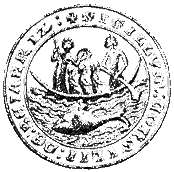Whaling History Timeline

For context, here's a basic timeline of key events in whaling history:
900 - 1600: Basque whaling in the Bay of Biscay, Spitzbergen, and Newfoundland.
1610: England begins whaling in Greenland with the Muscovy Company.
1640: Shore whaling starts in the Massachusetts Bay Colony; Germany also begins whaling.
1650: Shore whaling begins on Long Island, NY.
1600 - 1700: Shore whaling along Cape Cod.
1700: The peak of Dutch whaling.
1715: Six whaleships set sail from Nantucket.
1731: First use of swivel guns in England.
1750: Tryworks are first used on board whaleships.
1756: The first recorded whaling voyage from New Bedford (Dartmouth) by the Sloop Manufactor.
1789: The Ship Beaver of Nantucket is the first American whaleship to enter the Pacific Ocean.
1824: The Ship Stanton of Fairhaven, Massachusetts, records the first use of the single-flue harpoon.
1837: William Greener of Birmingham, England, introduces the Greener gun.
Circa 1835: Nantucket reaches the peak of its whaling industry with over 70 vessels.
1846: Shoulder guns and bomb lances are introduced in American whaling.
1848: Lewis Temple of New Bedford invents the toggle iron; whalers begin venturing into the Bering Sea and Arctic regions.
1857: New Bedford reaches the peak of its whaling industry with a fleet of 329 vessels.
1859: Oil is discovered in Pennsylvania, marking the beginning of the decline of whaling.
1861 - 1864: During the Civil War, 35 whalers are lost, and 40 more become part of the Stone Fleet in Charleston Harbor.
1864: Sven Foyn of Norway invents the cannon-fired explosive harpoon, ushering in the era of modern whaling.
1865: Darting guns are introduced.
1869: The last whaling voyage departs from Nantucket.
1871: The entire Arctic whaling fleet, consisting of 34 vessels, is lost in the ice.
1925: The Schooner John R. Manta undertakes the last sailing whaleship voyage, and the first modern factory ships are used.
© Website originally created by Thomas G. Lytle.
Bibliography Harpoons History Knives Lances Links Markings Non-Whaling
Patents Poison Processing Shoulder-Guns Shoulder-gun Irons Spades Swivel Guns and Irons